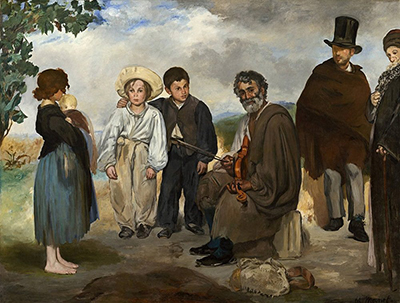Edouard Manet's painting The Old Musician may appeal to fans of Romanticism as well as those who enjoy Impressionism.
When Monet and Renoir first encountered the artist's work in the early 1860s, they admired his style of painting and often sought to emulate it while they forged their own style, which later came to be known as Impressionism. The Old Musician is a cultural hero, embodying that fierceness of spirit that seeks to protect what is beautiful even when the pressures of the social order hit it from many different sides. In a way, it is a commentary on the changes that were taking place in Parisian society. It reflects on the value of beauty in places that are run down or seen as easily replaced.
By placing pigments in the painting side by side, Manet preserves the directness of preliminary studies in his final works. Effects produced without blending tones were sharper and crisper. Academic methods would not have achieved that. Edouard Manet, like many other artists before him, often responded to the creative desires of the viewing public or other artists and writers in his work. The Old Musician was his way of depicting heroism in modern life. The painting was completed during 1862.
Charles Baudelaire, the renowned poet and critic, urged artists of the time to depict heroism. With this work and many others, Edouard Manet embodied the ideal painter in Paris at that time. At least, he embodied Baudelaire's idea of what contemporary Parisian art should look like. Emperor Napoleon III decided to renovate Paris and selected Baron Haussmann to direct the work. In the 1860s, Manet's studio was razed to accommodate a planned tree–lined boulevard. This replaced the slum where the artist did The Old Musician and a lot of his other work. In this painting, the artist represented one of the characters he would often see in daily life in the slum and elsewhere in Paris.
The Old Musician is a strolling musician. He is flanked by other cultural figures of that period such as a gypsy girl and an acrobat. Other figures are included as a comment on the social order. These are, an urchin, infant, a drunkard, and even a rag picker. The seemingly ad hoc gathering is carefully composed of the city's poor, possibly many of them have been dispossessed by Emperor Napoleon III and Haussmann’s projects. Neither sentimental nor anecdotal, the portrayal has neutrality, an important quality when considering what may have been a contentious issue at that time.




